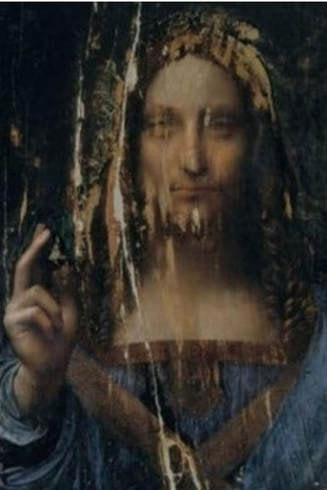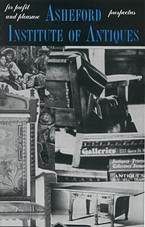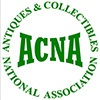 Florida - By now we've all heard the incredible story of the Leonardo da Vinci painting, "Salvator Mundi" (Saviour of the World) selling for the fantastical sum of $450 million at Christie's auction house last week. The story lit up every newscast and anchor room across the globe as editors and writers scrambled to outdo each other with descriptive financial superlatives about the sale. Readers and viewers were told of the James Bond-like circumstances of how the sale came to be, including a whirlwind promotional tour of the painting put on by the auction house itself in the months preceding the event. The hype surrounding the auction was nothing short of a Star Wars movie trailer. However, often lost in the telling of this tale, or only scantily referred to and in passing, was how this "apparent" da Vinci painting actually ended back up on the auction block, along with some of the mysterious circumstances surrounding that journey. The painting shows Christ in a blue robe holding a crystal orb, which represents the Earth, and is deemed as one of fewer than twenty paintings by the grand master known still to exist. Most current scholars agree that Leonardo is thought to have painted Salvator Mundi sometime after 1500, (about the same time-frame of the Mona Lisa). From here it is known to have made its way into the English Royal collection of Charles I by the early 17th-Century. After that, It disappeared for almost a hundred-and-forty years until resurfacing in 1900, when English art collector Sir Charles Robinson acquired it for the Cook Collection in Surrey. During the time of this rediscovery, the paintings authorship had also suddenly changed, and the painting was now being attributed to Leonardo's follower, Bernardino Luini, with Christ's face and hair having somehow been painted over. No details were given on the change in provenance and the painting quietly slipped back into obscurity until resurfacing at Sotheby's auction house in 1958, where it was promptly dismissed as the work of a disciple and sold for sixty-eight dollars. As it had in the past, the painting once again disappeared for almost another half-century, before turning up in Louisiana in 2005, badly damaged and in need of restoration. However, something caught the eye of a consortium of art dealers who ended up paying less than $10,000 for it at a local Louisiana auction house. Led by a group of conservators, and New York art collector Bob Simon, they set about conducting a meticulous restoration (including the removal of painted-over layers), and when completed in 2011, re-attributed the work to Leonardo da Vinci. In 2013 the consortium sold the painting to Russian billionaire Dmitry Rybolovlev, who bought it for $127.5 million in a private sale. Mr. Rybolovlev, clearly made a handsome profit on his 127 million-plus investment, but the questions surrounding the painting's authenticity still remained even after that sale. Why would Charles I own the work of anything less than a master? Why would an English art collector and curator suddenly change the provenance of a painting he just purchased from a master to a disciple (and why would it be painted over)? Additionally, according to auction house records in Louisiana, there are only anecdotal mentions of the 2005 sale, no official auction records. And lastly, how (and more importantly "why"), does a painting believed to be that of a disciple for over a hundred-years, suddenly revert back once again to a master, when landing in the hands of a newly formed art consortium? When Todd Levin, an internationally renowned art advisor was asked by the New York Times what he thought of the question of authenticity and the way in which Christie's promoted the painting, he told the newspaper: “This was a thumping epic triumph of branding and desire over connoisseurship and reality.” These may seem like harsh words so soon after the sale, but across the globe, some experts are now coming out of the woodwork and are starting to question just how real this event truly was. While this belief may not be the norm just yet, since most mainstream art advisors still believe in the legitimacy of the work, the doubters are beginning to gain some traction - especially when the story is viewed in its entirety. It's not that anything is glaringly out of place when contemplating the work and its subsequent timeline, but when one considers all the facts, and lack thereof surrounding this painting, wouldn't it have been prudent to maybe have a second (or third) look before writing a check for $450 million? After all, the new owner(s) are certainly going to need to perpetuate the "grand master" myth for the next sale - especially if they hope to hear the auction-house hammer fall at a billion... - AIA Staff Writers .  NOTE: For readers seeking more information about the Asheford Institute Of Antiques distance-learning program on professional-level appraising, the study of antiques, collectibles, vintage and mid-century modern items, please click here to visit the school's Home Page. Should you have additional questions about the Asheford program, you can also write to the school at: [email protected] or call the Registrar's Office toll-free at: 1-877-444-4508 Comments are closed.
|
AIA StaffWe're providing our students and reader's with the latest breaking news on events and happenings that we think might be of interest to both collectors and dealers alike. Including changes within the world of antiques, vintage, collectibles and appraising that might just have an effect on your bottom line. We're also interested in hearing from you - so if you've got a great newsworthy story, let us know, and you just might find it here! Archives
July 2024
CategoriesLegal Disclaimer: Extraneous opinions, statements and comments made by individuals represented within these posts do not necessarily reflect those of the Institute. The publication naming of specific business entities, organizations, and concerns, contained herein, in no way represents an endorsement or recommendation of services or products by the Institute. Publicly identifiable information contained herein (including, but not limited to contact information), has been intentionally limited where possible, due to privacy and legal concerns related to the digital dissemination of information through online means. All views expressed herein are those of their respective owners. The Institute is in no way responsible, financially or otherwise, for the accuracy or validity of statements contained within published posts from sources that originate and appear outside of the written and expressed views of those submitted by the Institute.
|

 RSS Feed
RSS Feed




